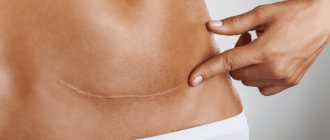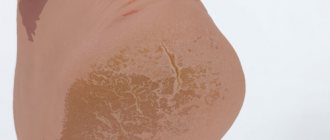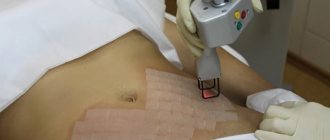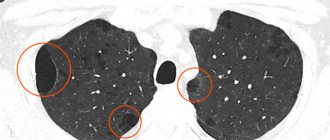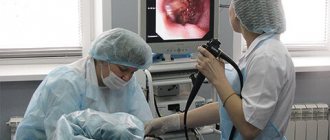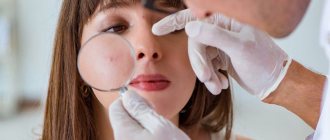March 5, 2020
Acne can cause discomfort at any age. The disease manifests itself with the onset of puberty and in most people ends by the age of 24-25. However, there are groups of patients who suffer from acne throughout their lives. Specialists at the Psormak clinic will tell you how to get rid of acne and significantly improve the condition of your skin.
Types of pathology
Acne provokes disruption of the sebaceous glands. Overproduction of secretions, partial or complete blockage of the gland canal cause such an unpleasant phenomenon as acne. Since the work of the sebaceous glands is regulated by sex hormones, problems begin in adolescence.
There are several types of acne:
- closed glands that appear as white papules or black dots;
- open comedones (gray-white papules, in which the gland canal is partially open);
- papulopustular formations with signs of inflammation;
- severe rashes, characterized by deep pustules and nodules, which can lead to irreversible changes in the skin.
Often the situation is aggravated by the entry of bacteria into comedones, which provokes an inflammatory process.
Acne (blackheads) - symptoms and treatment
Acne is an inflammatory disease of the sebaceous glands and hair follicles.
Our skin has three layers:
1. top layer - epidermis;
2. middle layer - dermis;
3. underlying layer - hypodermis (subcutaneous fat).
The epidermis itself consists of several layers, the uppermost of which is called the horny layer, consists of dead corneocyte cells and performs a protective function.
The dermis is the most important layer of the skin; it is where the entire “life” of the skin is maintained. The dermis is intertwined with blood vessels and full of nerve endings. It is here that the main cells - fibroblasts - are born and work for the beauty of our skin. In addition, the dermis contains sebaceous and sweat glands, as well as hair follicles.
The hypoderma consists of loose connective tissue and fat cells - adipocytes. The thickness of subcutaneous fat depends on its location on the body and nutrition.
Of greatest interest to us are the sebaceous glands, skin appendages that are located in the dermis.
The sebaceous glands produce sebum, which is what shines so treacherously on the skin of the face, especially in the forehead, nose and chin, the so-called “T-zone”. This type of gland is hormone dependent. Sebum production occurs under careful multi-level control, which involves:
- hypothalamus;
- pituitary;
- adrenal cortex and gonads.
Hormones and their role in the development of acne
Any hormonal surge causes the sebaceous glands to actively secrete sebum.[2]
Seborrhea is a skin disease that is manifested by pathological activity of the sebaceous glands. The clinical manifestations of seborrhea are that one can observe enlarged pores, gaping or clogged with comedones, oily or dry peeling, and greasy hair. With such active production of sebum, a change in its composition occurs; laboratory studies revealed an excess amount of androgens and a reduced content of estrogens. Also, the amount of linolenic acid in sebum decreases - this helps to increase the alkaline level of the skin, disrupt barrier properties and multiply microorganisms on its surface.[3]
What microorganisms cause acne
Among the causes of acne, the first place is occupied by changes in the microbial flora of the skin. When examining the isolated microbial flora in patients with acne, a large number of anaerobic lipophilic corynebacteria, aerobic micrococci bacteria and gram-positive rods are found.
Three microorganisms take part in the inflammation process:
- corynebacterium (Propionibacterium acnes);
- cocci (Staphylococcum epidermidis);
- lipophilic fungi (Pityrosporum ovale et orbiculare).
The leading role in triggering the inflammatory process is played by Propionibacterium acnes, which produces various enzymes, including lipase. This enzyme is capable of damaging the follicle wall from the inside. The role of the immune system cannot be excluded, a decrease in the function of which is a favorable factor for the proliferation of P. acnes. A key role in the occurrence of acne is played by the hormonal status of the patient, namely hyperandrogenism - an increase in male sex hormones (testosterone and dihydrotestosterone). The sebaceous glands have certain receptors that are sensitive to androgens. Accordingly, when the level of these hormones increases, the sebaceous gland begins to pathologically actively produce sebum. In addition, the causes of acne on the face can be attributed to a hereditary factor.
Other causes of acne
All of the above etiological factors can be attributed to endogenous causes of acne , that is, having an internal nature. As for exogenous causes influencing the occurrence and development of the disease from the outside, these, first of all, include exposure to sunlight. With active insolation, skin immunity is significantly reduced, which, again, is a favorable factor for the proliferation of P. acnes.[1]
One of the reasons for the spread of acne recently is the fashion for fitness and sports, and here we cannot fail to mention bodybuilders. Due to their high-calorie diet and intake of anabolic steroids and testosterone derivatives, they are at risk for developing acne on the face, taking these drugs without consulting a doctor and taking into account the real indications for use, namely for gaining muscle mass. Taking anabolic steroids leads to sharp activity of the sebaceous glands in both men and women, even if there have been no skin problems in the past. Subsequently, various forms of acne can be observed, from acne vulgaris to conglobate forms of acne. In addition to the acquired disease, women may experience a deepening of their voice, male-pattern hair growth, and disappearance of menstruation. In men, the concentration of sperm in the seminal fluid decreases. The first point in treatment in this case will be the abolition of testosterone derivatives and anabolic steroids.[3]
Newborn acne
In the first three weeks after birth, acne occurs in 20% of newborns [7]. In infants, it appears as inflammatory papules on the cheeks and nose and closed comedones. The rash occurs due to a hormonal crisis or excessive secretion of testosterone during the prenatal period. The hormonal crisis is caused by a sharp decrease in estrol in the blood of newborns in the first weeks of life.
Acne can also appear when the mother takes systemic glucocorticosteroids in the last trimester of pregnancy.
Newborn acne goes away within a few weeks or months, so it rarely requires treatment. In this case, scars, as a rule, are not formed.
Causes of the disease
How to get rid of acne on the face and nose is a question that interests many patients. It is important to understand that the severity of the disease depends on many factors. Modern medicine claims that the manifestation of acne is predetermined by a genetic factor, hormonal imbalance, and chronic diseases of the body.
The intensity of the rash may be influenced by the following factors:
- poor skin hygiene;
- excessive consumption of sweets;
- incorrectly selected decorative and skin care cosmetics;
- stressful situations;
- smoking;
- alcohol;
- premenstrual stage of the female cycle.
Such a variety of factors requires an integrated approach to therapy. To cure acne, examinations are necessary, identifying the cause of the pathology and prescribing adequate medication support.
Acne treatment methods
If inflamed rosacea appears on your face and you feel a strong tingling sensation, then you should
Seek advice from our trusted specialists! Since even simple acne can develop into a more unpleasant disease - rosacea.
Doctors will be able to provide all the important information on combating pathology and will carry out safe procedures in the shortest possible time. With timely diagnosis and treatment, your face will become clear and radiant again.
For a long time there was no most effective and rapid treatment for the disease. As a rule, an integrated approach is always used. It involves the work of several specialists at once: a dermatologist, a nutritionist, a surgeon. Treatment occurs in several stages:
- prevent the formation of comedones;
- clear clogged ducts;
- stop the proliferation of bacteria;
- reduce sebum secretion;
- cure inflammation on the skin.
Those with this unpleasant disease took antibiotics, used ointments, and followed a diet. This approach did not always help, but could only do harm. In modern cosmetology, a new effective means for treating acne has appeared - light and laser technologies.
Therapy
When considering the question of how to get rid of whiteheads, you need to understand that diet plays an important role in therapy. It must be balanced in nutrients. Doctors recommend consuming large amounts of complex carbohydrates and limiting the amount of sweets. It is necessary to monitor the normal functioning of the intestines. The high polyphenol content of chocolate also contributes to skin inflammation, so patients are advised to limit this product in their diet.
In general therapy, a distinction is made between local and systemic drugs.
The local group includes the following products:
- antibacterial ointments;
- ointments based on retinoids (promote skin regeneration);
- skincare products based on salicylic acid.
The peak of the disease occurs in adolescence; if you follow the doctor’s recommendations and take proper care of your skin, the rashes become smaller. If the causes of acne are systemic disorders, a specialist may prescribe the following medications:
- antibiotics;
- combined oral contraceptives to normalize the menstrual cycle;
- retinoids;
- medications to correct the functioning of the gastrointestinal tract.
What kinds of post-acne acne occur?
There are 3 types of post-acne, not only age spots:
- Scars are the most undesirable complication of post-acne
- Pigment spots – brown spots on the sites of former rashes
- Congestive erythema - redness accompanied by compaction from an unresolved element
All three types of post-acne can be present on the skin either simultaneously or separately, depending on individual characteristics and the tendency to develop pigmentation or scars.
The main predisposing factors for the appearance of post-acne
- Severity of acne – acne of III and IV severity often leads to complications, because affect the deep layers of the skin.
- Individual skin characteristics, genetic predisposition - such as dark skin color, a tendency to increase melanin production at the slightest inflammation or damage to the skin.
- Lack of treatment, inappropriate treatment, or late treatment is when the process has been present in the skin for a long time and has affected deep tissues.
- Skin injuries during mechanical cleaning, i.e. when roughly squeezing out pimples.
The presence of at least one predisposing factor may be the cause of the development of post-acne.
Preventing and combating acne on the face
When we talk about acne and its prevention, we mean a mild form of the disease. You should not treat more complex types of rashes yourself, as this can lead to serious skin problems. Sometimes sepsis may even occur.
If we talk about mild forms, it is important to do prevention. Cosmetologists prohibit squeezing out comedones on your own, so that later more complex ones do not form, and atrophic scars do not appear. After all, it will be more difficult to fight them. Experts talk about the main rules that must be followed:
- eat right, especially when the sebaceous glands are at their most active. You should not eat sweet, fatty foods, or foods with large amounts of simple carbohydrates;
- monitor hand and facial hygiene. Thanks to this, small pimples can disappear. Even if they do not disappear, they will definitely stop spreading under the influence of external factors;
- use antiseptic creams and masks. They prevent bacteria, dirt and dust particles from getting inside the pores and causing inflammation.
Ultrasonic facial cleansing
It is very important to initially get rid of all the causes of acne on the face quickly. Then, using ultrasound, you can effectively clean your face and forget about the problem. It is painless, does not cause discomfort, and gives the desired result for a certain time. Many women today use this procedure to tidy up their facial skin. But it is important to remember that such a procedure should be carried out exclusively by professionals.
Self-treatment can cause complications and more serious skin problems and severe forms of rashes.
How to avoid age spots and scars
- Start acne treatment immediately. Even mild forms cannot be ignored - grade 0-2 acne, when there are single elements on the skin.
- Don't push! A banal but difficult point to implement. Skin cleansing can be done and sometimes even necessary, but it should be done carefully and competently by a cosmetologist.
- Use medications with anti-inflammatory effects. Not to be confused with antibacterial! Anti-inflammatory drugs have both preventive and therapeutic effects.
Recommendations follow from the previous paragraph - exclusion of predisposing factors.
Types of acne on the face
Experts identify the following types of acne:
- comedo. This is a white pimple that just appears. They are also called blackheads. This is a sebaceous plug that has closed the pore and can provoke an inflammatory process;
- papule. This pimple can be called a full-fledged one, it has inflammation, and pain appears when you press with your fingers. The hue of the papule can be red and sometimes bluish. When you press on it, it becomes pale, after which it fills with blood;
- pustule. It arises from a papule; it already contains pus, which comes out as a white dot to the surface;
- nodular cystic acne. These are pustules, but in a severe form. There are not a few of them; conglomerates are created here that penetrate the dermis quite deeply. They are connected to each other by fistula ducts and are painful. They need to be seriously treated;
- lightning acne on the face. This form is the most severe, where acne affects large areas of the face. In addition, there is a change in the leukocyte formula of the blood, pain in the bones, muscles, and hyperthermia.

